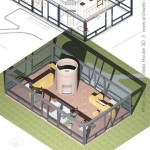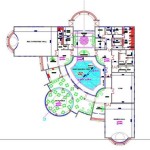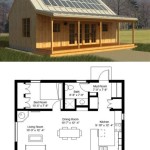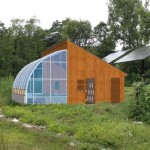Home Fire Escape Plan Grid: A Comprehensive Guide to Safety
A home fire escape plan is a critical element of household safety. It’s not merely a suggestion, but a necessity. A well-defined and practiced escape plan dramatically increases the chances of survival in the event of a fire. Creating a home fire escape plan grid is a systematic and organized approach to ensuring everyone in the household knows exactly what to do and where to go in an emergency. This article will provide a detailed guide to constructing an effective home fire escape plan grid, emphasizing key considerations, steps, and practice drills.
The unpredictability and rapid spread of fire make pre-planning paramount. Fires can ignite unexpectedly, and the resulting smoke and heat can quickly disorient individuals, making rational decision-making difficult. Having a pre-established plan allows individuals to react instinctively, following a familiar route to safety, even under extreme stress. A home fire escape plan grid is a visual representation of this plan, detailing escape routes, meeting points, and other critical information.
Key Point 1: Designing the Grid – Mapping Your Home
The foundation of any effective home fire escape plan is a detailed map of the residence. This map, the foundation of the grid, needs to accurately reflect the layout of each floor, including all rooms, hallways, doors, and windows. This isn't just an artistic rendering; it needs to be a practical guide for escape. Consider using graph paper or digital drawing tools to ensure accurate representation and scaling.
Begin by drawing the outline of each floor. Indicate the placement of all windows and doors, including those leading to the exterior. Clearly mark stairwells, as these often represent crucial escape routes, but can also become hazardous if blocked by fire or smoke. Identify and label each room, including bedrooms, living areas, kitchens, and bathrooms. Don’t overlook closets, pantries, and other frequently overlooked spaces.
Once the basic layout is complete, identify two escape routes from each room, particularly for bedrooms where occupants are likely to be asleep when a fire starts. These routes should represent the quickest and safest paths to the outside. For rooms on upper floors, consider the use of fire ladders. Mark these clearly on the grid, indicating the window where they are to be deployed and the safe landing zone below. Consider that windows may not be viable exits if they are too small or difficult to open. Alternative routes should always be available.
Next, mark the location of smoke detectors on the grid. Smoke detectors are early warning systems, providing crucial time for occupants to evacuate. Verify that smoke detectors are strategically placed throughout the home, particularly outside sleeping areas and on each level. Functioning smoke detectors significantly improve survival rates in a fire. The grid can then serve as a checklist, prompting regular testing and battery replacement.
Finally, designate a meeting place outside the home. This should be a safe distance away from the structure, such as a neighbor's yard, a specific tree, or a mailbox. This meeting place is crucial for ensuring everyone has safely evacuated and for accounting for all members of the household. The designated meeting point should be prominently displayed on the grid. Consider having two meeting points, in case the primary location is inaccessible due to fire or other hazards.
After creating the basic grid, it's important to evaluate its practicality. Walk through each escape route, identifying potential obstacles or hazards. Are hallways clear of clutter? Are windows easily opened? Are fire ladders readily accessible? Address any potential problems before they become life-threatening during an actual fire.
Key Point 2: Assigning Roles and Responsibilities
An effective fire escape plan isn’t just about knowing where to go; it’s also about who is responsible for what. Assigning specific roles and responsibilities ensures that critical tasks are completed quickly and efficiently during an evacuation. These roles need to be tailored to the specific needs and capabilities of each household member.
One primary responsibility is alerting other occupants. This could involve yelling "Fire!" or using a pre-determined alarm signal. The person responsible for alerting others should be aware of the location of all bedrooms and the sleeping habits of each occupant. They need to be prepared to wake up sleeping individuals quickly and effectively.
Another crucial responsibility is assisting children, elderly relatives, or individuals with disabilities. These individuals may require extra help to evacuate safely and efficiently. A designated person should be responsible for ensuring their safe passage out of the house. This might involve physically carrying them, guiding them through smoke-filled areas, or providing reassurance and encouragement.
Someone should also be assigned the task of calling the fire department once everyone is safely outside. This ensures that emergency services are notified promptly and can respond quickly to extinguish the fire. The person making the call should know the home address and be prepared to provide details about the fire's location and extent.
If possible, designate someone to grab a pre-packed emergency kit. This kit should contain essential items such as flashlights, batteries, a first-aid kit, blankets, and a whistle. These items can provide comfort and assistance while waiting for emergency services to arrive. Keep the kit in an easily accessible location near a designated exit.
Clearly delineate these roles on the home fire escape plan grid using color-coding or symbols. This visual representation makes it easy for everyone to understand their responsibilities during an emergency. Regularly review and update these roles as needed, particularly as household members' capabilities and responsibilities change.
It's also important to consider alternative plans in case the primary person assigned to a specific role is unavailable. For example, if the person responsible for assisting a disabled individual is away, another household member should be prepared to step in and fulfill that role. Flexibility and adaptability are crucial in an emergency situation.
Key Point 3: Practice Drills and Refinement
A well-designed escape plan is only effective if it's practiced regularly. Fire drills are essential for reinforcing the plan and ensuring that everyone knows what to do instinctively. These drills should be conducted at least twice a year, ideally during both daytime and nighttime hours to simulate different scenarios.
Before conducting a fire drill, review the escape plan grid with all household members. Remind them of their assigned roles and responsibilities. Explain the escape routes and the location of the meeting point. Answer any questions and address any concerns they may have.
During the drill, simulate a fire by activating a smoke detector or using a pre-arranged signal, such as a whistle or a verbal command. Time the evacuation, noting how long it takes for everyone to reach the meeting point. This provides valuable insights into the efficiency of the plan and identifies areas for improvement.
Observe how each individual performs during the drill. Are they following the escape routes correctly? Are they fulfilling their assigned roles effectively? Are there any obstacles or bottlenecks that are slowing down the evacuation? Note any areas where individuals are struggling or where the plan is not working as intended.
After the drill, gather everyone together to discuss the experience. Ask for feedback on what went well and what could be improved. Encourage open and honest communication. Use the feedback to refine the escape plan grid and address any identified issues. This iterative process of practice and refinement is crucial for ensuring the plan's effectiveness.
Consider simulating different fire scenarios during the drills. For example, block off one escape route to force individuals to use an alternative route. This helps them to develop adaptability and problem-solving skills in a stressful situation. Also, practice evacuating with vision obstructed to simulate smoky conditions. This can be done by having participants close their eyes or wear blindfolds.
Regularly review and update the home fire escape plan grid as needed. Changes in the home's layout, the addition of new family members, or the acquisition of new fire safety equipment may necessitate adjustments to the plan. Make sure that the grid is always up-to-date and reflects the current situation.
The fire escape plan grid should be displayed prominently in a central location, such as the kitchen or hallway, where it can be easily accessed and reviewed by all household members. Consider creating smaller, laminated versions of the grid to keep in bedrooms or other frequently used areas.
Ultimately, the goal of a home fire escape plan grid is to create a culture of fire safety within the household. By actively planning, practicing, and refining the escape plan, families can significantly increase their chances of survival in the event of a fire. This is an investment in safety, security, and peace of mind.

Fire Safety Home Escape Plan Child Hub

Fire Escape Plans Ontario Association Of Chiefs

Keeping Our Community Safe With Home Fire Escape Planning Nyack Department

Fire Escape Plan City Of Cambridge

Home Fire Escape Plans

Fire Safety Being Prepared For House Fires Tered Squirrel

Vcu Health Fire Escape Plan Page 1 Created With Publitas Com

Fire Escape Plan Templates For Printing Maker
Fire Escape Plan

Create It And Practice Fire Escape Plan Article Hannibal Net








